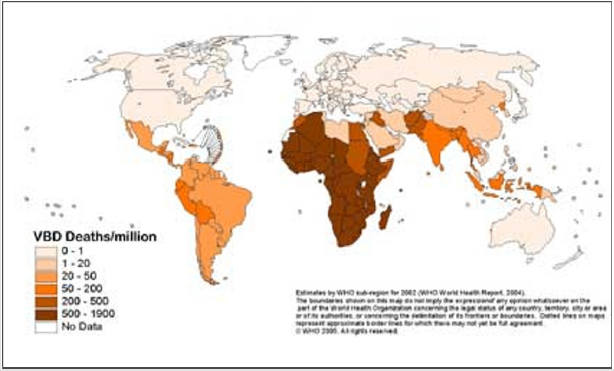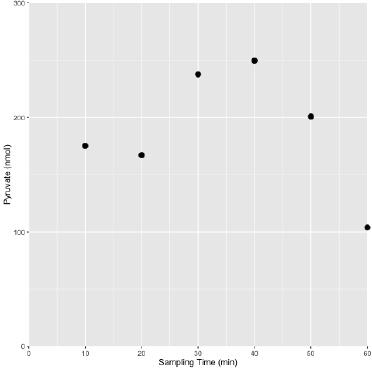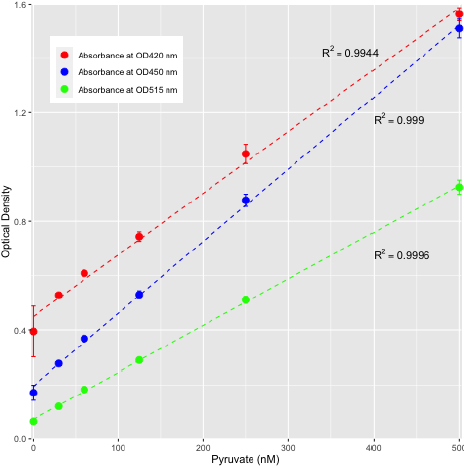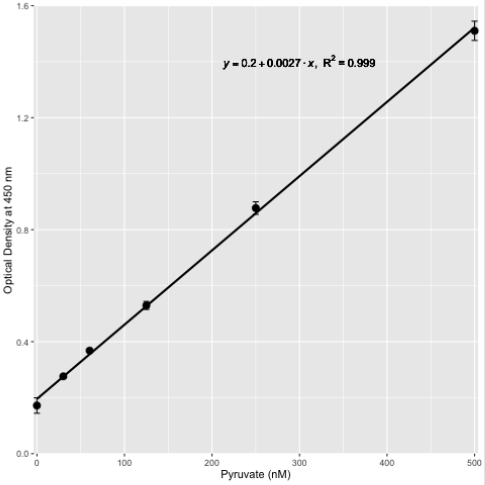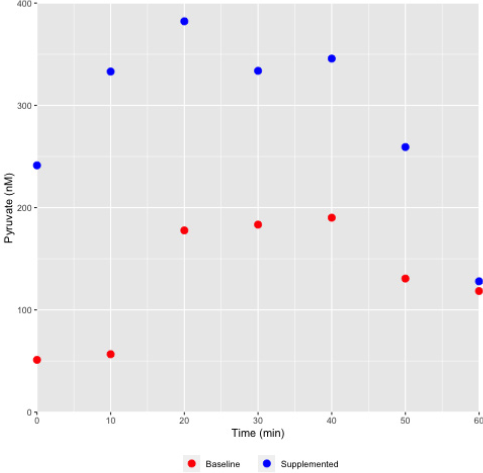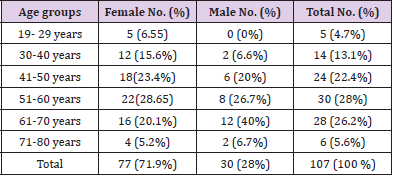Impact of Intrauterine Exposure on Fetal Brain
Development and Brain Injury
Human prenatal brain development after fertilization is usually
classified into four periods: 0–7 gestational weeks (GW) and
neuronal proliferation during 8–15 GW, 16–25 GW, and > 26 GW
[1]. In humans, neurons are mostly produced in the first trimester
of gestation. The rapid development of the fetus’s cerebral cortex
from the day of fertilization occurs for a period lasting from 8
to 15 weeks, and by 16 weeks, the number of neurons in the
cerebral cortex reaches the adult level [2,3]. Abnormal brain
growth may result from an unsuitable intrauterine environment.
Adverse intrauterine environments that may have a negative
effect on the fetal brain include maternal diabetes, undernutrition,
infection, hypoxia, stress, alcohol, smoking, toxins, and anemia;
hypertensive disorders in pregnancy; high-altitude pregnancies;
and placental insufficiency. These adverse environmental factors
may trigger epigenetic alteration and have a significant impact
on fetal brain development through genome-wide changes of
epigenetic regulation. The common epigenetic modifications
include acetylation of histone and methylation of DNA, in addition
to non-coding RNA epigenetic regulations [4,5] and chromatin
modification [6,7], which are vulnerable to the maternal
environment [8]. The purpose of this review is to summarize
articles on the deleterious effects of some types of intrauterine
exposure on fetal brain development and brain injury. The hope is
to provide the impetus for further studies to delineate the function
of the intrauterine environment on fetal brain development,
through evidence from premature and term infants, as well as the
role of the intrauterine environment in lifelong brain injuries and
the pathologic mechanisms by which these injuries occur.
Fetal Brain Development
Synapse Development: Synapses connect billions of neurons
during intrauterine fetal brain development, which is important
in all functional neuronal circuits [9]. Synaptic plasticity is
characterized by the removal and insertion of amino-3-hydroxy-
5-methy1-4-isoxazolepropinic receptors (AMPARs) into the postsynaptic membrane, and by the shrinkage or enlargement
of dendritic spines, where the majority of excitatory synapses
are positioned [9,10]. Synapse formation exceeds elimination,
leading to a surplus of immature excitatory synapses during
early brain development. Subsequently, synapse elimination and
destabilization diminish the number of synapses, thus refining
neural circuits that generate cognition and behavior [11]. Cell
surface receptors such as metabotropic glutamate receptors
(mGluRs), NMDA-type glutamate receptors (NMDARs), and tyrosine
kinase (TRK) receptors activate mTOR signaling through the AKT
pathway and the phosphoinositide-3 (PI3K) pathway, and MAPK
via the ERK pathway. The ERK/MAPK pathway plays a key role in
synaptic plasticity, consolidation of memory, and the transition from
pluripotent stem cells to neuronal progenitors [12]. The myocyte
enhancer factor (MEF2) family of transcription factors can regulate
synapse elimination during brain development [13,14]. Synaptic
strength is mainly influenced by changes in synaptic structure
that depend on instruction of local protein synthesis, structural
remodeling of the cytoskeleton, and receptor signaling [15,16].
Glutamate serves as both as a key neuromodulator to control
synape and cirruit function and the mammalian brain’s primary
excitatory neurotransmitter over a wide range of temporal scales
and spatial.The group metabotropic GluRs (mGluRs) are abundant
at excitatory synapses throughout the brain, where they are
speculated sited to adjust to glutamatergic signaling [17]. They are
vital to synaptogenesis and the shape of neural circuitry during the
period of brain development [17]. Some evidence has demonstrated
the important function of signaling lipids in mediating signal
transduction and membrane traffic at pre-and post-synapses. For
example, phosphoinositides can conduct ion channels, regulate
exocytosis and endocytosis of synaptic vesicles and postsynaptic
receptors, and signal from activated neuroreceptors such as
NMDARs and mGluRs to allow plastic adjusted function of synapse
[18,19].
Oligodendroglial Cells: Oligodendroglial cells in the central
nervous system (CNS) synthesize myelin, transform from
progenitor to the mature oligodendrocyte, and play a key role
in salutatory conduction of action potentials [20-22]. After 20
GW, oligodendrocyte progenitor cells (OPCs) are shaped in the
ventricular zone [23]. OPCs are generated in the brain and spinal
cord from multipotent stem cells, and then they proliferate and
differentiate. Neurogenesis and oligodendrogliogenesis progress
at different rates in the human brain. OPCs first emerge in the
ganglionic eminence at approximately 9 GW in pregnant women
[24,25]. In humans, cortical oligodendrogenesis begins at around
10 GW, but it progresses well into adulthood [26]. Olig2-positive
stem cells from early fetal development exist in the germinal matrix
of the brain and transfer from the original regions in the brain to
the axon-dense zones of the neocortex, spinal cord, diencephalon,
and brainstem.
Gliogenesis: Gliogenesis is often generated during the last
trimester of gestation in humans [27]. As mentioned above, the
timing of an insult in pregnancy is critical to compare and estimate
the neurodevelopmental response of offspring. While early insult
in pregnancy is related to structural brain abnormalities such
as neural tube defects, late-gestation insults may disturb the
migration progression of postmitotic neurons and cause deviant
cortical development [28]. Later insults have been demonstrated to
be associated with more with behavioral, cognitive, and psychiatric
disorders, such as autism, obsessive compulsive disorders,
and schizophrenia [29,30]. The regulation of oligodendrocyte
differentiation and myelination in the fetal brain involves negative
and positive regulators [23]. There are three negative regulatory
pathways for oligodendrocyte differentiation, including the BMP
signaling, Notch signaling, and Wnt/β-catenin pathways. These and
Wnt pathways are involved in oligodendrocyte maturation. Some
studies showed that white matter disorders are associated with
dysregulation of the BMP and Wnt/β-catenin signaling pathways
[31,32]. The maturation of oligodendrocytes relies on ATP through
oxidative phosphorylation in mitochondria [33]. Mitochondria
support oligodendrocyte differentiation and survival [34]. It is
commonly found that after hypoxia-ischemia, mitochondrial
dysfunction occurs in the developing brain [35]. Studies have
demonstrated that microglia have an effect on the maturation of
oligodendrocytes during normal brain development. Activated
microglia discharge high levels of pro-inflammatory cytokines,
including interleukin (IL)-1β, IL-2, and IL-17; tumor necrosis
factor-alpha (TNFα); and excitotoxic factors such as glutamate,
nitric oxide, and hyaluronan, or endothelial growth factor, which
impair immature oligodendrocyte differentiation and proliferation
and assist in decreasing the number of oligodendrocytes [36-
39]. Mitochondria are very important in the developing brain
and throughout life in energy phosphate tasks such as regulating
the cellular redox state, maintaining organelle function, cellular
proliferation, mediating the DNA or protein responsible for
transcription, excitotoxic injury, translation and assembly of
the enzyme complexes of the respiratory chain, and apoptosis.
These mitochondrial functions in cellular proliferation rely on
mitochondrial dynamics. Mitochondria are extremely plastic and
mobile, altering their shape through fission and fusion to reach
sites of high energy demand in cells [40]. Mitochondrial impairment
results in deregulation of calcium homeostasis, bioenergetic failure,
mitochondrial permeabilization with release of proapoptotic
proteins, and production of reactive oxygen species (ROS), leading
to cell death [41].
Myelination: The myelination of mature oligodendrocytes
continues especially in late gestation and is susceptible to
excitotoxic and damage associated with premature exposure to
the extrauterine environment without neuroprotection. Neonatal
or fetal brain injury may occur as a result of thrombosis, infection,
hemorrhage, trauma, or hypoxia and can lead to lifelong cognitive,
sensory, or motor dysfunction. Defining the type and range of brain
damage is not as simple as it would seem. Magnetic resonance
imaging (which requires dangerous ionizing radiation) and
transcranial ultrasound (which has limited sensitivity) can only be
used to examine the damaged fetal brain, not to predict function.
Placenta and Fetal Brain Development: The placenta is the
maternal-fetal interface that has an essential role in the transfer
of nutrients and oxygen to the fetus and provides and secretes
growth-regulating factors to ensure the neurodevelopment of fetal
brain. In addition, the placenta functions as an immuno-defender
to protect the fetus from maternal infection and inflammation.
The placenta, which controls the intrauterine environment, is of
fetomaternal organ. It is well-known to secrete neurotransmitters,
which are associated with abnormal neurodevelopment and normal
fetal brain development. The maternal component of the placenta
is the decidua. The fetal placental tissues include the umbilical
cord, chorionic villi, amniotic membrane, and chorionic membrane
[42,43]. Placental metabolism, placental hormone production, and
substrate transport are all essential for fetal development. Normal
development of the placenta includes two concurrent and complex
processes: the cytotrophoblast (CT) cells invade the endothelium of
the maternal spiral artery and then the fetal vascular tree develops.
Endothelial cell invasion initially leads to the formation of a
trophoblast “plug,” resulting in a hypoxic milieu environment within
the intervillous space (oxygen partial pressure [PaO2] < 20 mm Hg)
[44]. After 10 GW, the CT plug dissipates, which results in increased
placental blood flow and PaO2 [45,46]. Several mechanisms affect
placental function. The sustained high-pressure flow through the
intervillous space (2–3 m/s, while normal dilated vessels are 10 cm
/s) leads to increased shear stress and damage to the trophoblast
cells of the chorionic villus, thereby damaging the capacity of the villi
for nutrient and gas exchange [46,47]. Unsuccessful spiral arterial
conversion makes these vessels prone to adrenergic stimulation
and vasoconstriction, which leads to intervillous PaO2 fluctuations
and placental hypoxic perfusion injury [48]. Dysregulation of
angiogenesis and anti-angiogenic factors in the placental interface
results in abnormal development of the fetal vascular tree in the
placenta [49], subsequently impairing the function of the placenta,
and has been relevant in the development of preeclampsia,
gestational diabetes-related pregnancy, fetal growth restriction
(FGR), placenta early exfoliation, intrapartum fetal compromise
(IFC), and preterm birth [50-52].
Risk factors of arterial disruption involve trauma, preeclamptic
arteriopathy, uterine rupture, abruption placenta, and vasoactive
drugs, such as nicotine or cocaine. Marginal retroplacental
hemorrhages mostly occur at the margin of venous drainage of the
placenta [53,54]. Many other events, such as malnutrition, genetic
abnormalities, and infection can also disturb placental function and
alter the fetal brain’s environment. The failure function of placenta
can directly injure the developing brain or raise its vulnerability to
injury, result in lasting neurological disabilities [55,56].
Fetal Brain Injury
Intrauterine Fetal Brain Injury: Chorioamnionitis, hypoxia,
fetal inflammatory response, and preterm birth can contribute
to brain injury and progression of the subsequent neurological
deficits [57]. Hypoxia and inflammation mediate neuropathology,
acting to induce neuroinflammation and breakdown of the blood
brain barrier (BBB), resulting in oligodendrocyte cell damage
[58]. The activated immune cells such as mast cells, microglia, and
neutrophils release the key cytokines IL-1α, IL-1β, IL-6, and IL-
18, which sequentially stimulate the discharge of TNF, ROS, and
excitatory amino acid agonists, including glutamate, which work
together to initiate neural cell apoptosis [59,60]. The substances
above can also directly influence the differentiation of neurons
and OPCs by inducing apoptosis and can cause mitochondrial
failure [61,62]. Neighboring reactive astrocytes, by releasing TNF-α
and IL-1β, cause proliferative inhibition of oligodendrocytes and
downstream activation of apoptotic pathways [63].
Impact of Intrauterine Infection: Many microorganisms,
which include certain viruses, bacteria, and protozoa, have been
linked to intrauterine infection. These infections can result in
clinical syndromes, including TORCH infections, referring to
infections caused by toxoplasma, other microorganisms, rubella
virus, cytomegalovirus (CMV), and herpes simplex viruses (HSV)
[64]. Other common infections in women are caused by aerobes,
such as group B streptococcus (GBS) (15%); and gram-negative
rods, including Escherichia coli (8%), anaerobes, including
Bacteroides sp. (30%) and Gardnerella vaginalis (25%) [65].
These microorganisms are associated with preterm birth [66].
Further studies demonstrated that a persistent intrauterine
inflammatory exposure may also result in fetal brain injury [67].
The characterization of chorioamnionitis is an intra-amniotic
infection in which bacteria invaded the amniotic cavity, resulting
in acute inflammation of the fetal membranes and/or the placenta
[65]. Chorioamnionitis, which results in spontaneous preterm
birth and premature rupture of membranes (PROM), is defined
as a feto-placental environment of acute inflammation [68].
Chorioamnionitis often leads to fetal inflammation and damage to
the immature brain, raising the possibility of diffuse white matter
injury and intraventricular hemorrhage [69]. Fetal inflammatory
response syndrome (FIRS), resulting from systemic immune
activation, is characterized as inflammation of multiple fetal
organs in utero [70]. Infections can trigger inflammatory pathways,
causing the discharge of diverse proinflammatory biomarkers, such
as interleukins, cytokines, and other molecules. Proinflammatory
cytokines such as IL-1β, IL-6, and tumor necrosis factor-alpha (TNF-α) from microglia and astrocytes may directly insult neurons
and oligodendrocytes. The injection of IL-1β in neonatal rats leads
to delayed myelination and neuronal death [71]. TNF-α induces
apoptosis in developing oligodendrocytes and cell death in mature
oligodendrocytes [72].
Toxoplasma: Primary infection of congenital toxoplasmosis in
pregnant women is uncommon, but it remains as a latent, chronic,
cryptic brain infection throughout the life of the host, often with
severe consequences [73]. Some studies have demonstrated
that infection of the toxoplasma may alter cognitive functions
and human behavior and may cause headaches, the onset of
schizophrenia, and cryptogenic epilepsy [74]. Chronic, adultacquired
Toxoplasma gondii infection in outbred mice can cause
behavioral and neurologic abnormalities secondary to the loss of
brain parenchyma and inflammation [74]. There is also improved
expression of message for synaptic remodeling and markers of
neuronal cell death and mediators of inflammation in brains
of chronically infected mice, comparing to uninfected control
mice [74]. Synaptic transmission underlies vastly complicated
instruction by protein networks assembled at the presynaptic
location of neurotransmitter discharge and the postsynaptic
device for neurotransmitter reception. Haroon and colleagues have
indentified that T. gondii–-activated cytokines disturb synaptic
signaling [75]. Chronic T. gondii infection brings dissimilar changes
in synaptic protein composition, which downregulate a huge
number of proteins occupied in synaptic plasticity and pose a
danger for neuropsychiatric disorders [75].
Rubella: During the Rubella epidemic in the U.S, in 1964-1965,
thousands of infants were infected and subsequently suffered
lifelong problems. During this epidemic, 8–13% of cases were
congenital rubella syndrome (CRS) occurring in early pregnancy.
Rubella virus has a particular affinity for the central nervous system,
resulting in mental retardation, encephalitis, cataracts, central
auditory imperceptions, glaucoma, and cochlear atrophy [76]. Fetal
damage associated with rubella is inclined to occur only when an
infection occurs in the first 16 weeks of pregnancy. In general, the
earlier the infection begins, the more severe the malformation that
is observed [77]. The later sequelae of rubella in early pregnancy
include diabetes and autism [78-81].
Cytomegalovirus: Human cytomegalovirus (HCMV) infection
is the main cause of congenital viral infection and brain disease in
developed countries. HCMV is also a major pathogen in congenital
illness and can lead to permanent disabilities, including hearing
loss, mental retardation, and vision loss. It was reported that 50%
of children with congenital HCMV infection in Japan developed
hearing loss 6 months after their diagnoses [82]. HCMV in fibroblasts
acquires its covering by budding into exosome-like vesicles, which
subsequently combine with the plasma membrane to discharge
mature virions from the cell. Compared to the infected cells, the
glycerophospholipid component of HCMV virions is strikingly
different. The liposome of virions has been found to be similar to
that of synaptic vesicles via comparing Monica the published results
[83]. These similarities showed that HCMV in fibroblasts obtains
its envelope by budding into vesicles, which can fuse at the plasma
membrane to discharge mature versions of this cell. Synaptosomalassociated
protein of 25 kDa (SNAP-25), a constituent of the SNARE
complex, which mediates exocytosis of synaptic vesicles in exocrine
cells and neurons, has been found to be involved in the exit of HSV-1
from neurons [83,84].
Herpes Simplex Viruses: The rate of neonatal herpes simplex
virus (HSV) infection ranges from 1 in 2,500 to 1 in 20,000 live
births. Manifestations of congenital HSV include hydranencephaly,
chorioretinitis, skin lesions, scars, and microcephaly. The condition
of neonates who have HSV infection can deteriorate rapidly
due to encephalitis, disseminated intravascular coagulopathy,
shock, or respiratory distress. Infants who survive neonatal HSV
encephalitis have high rates of neurological sequelae, including
mental retardation, visual or motor deficits, Alzheimer’s disease
(AD), and seizure disorders [85]. HSV-1–infected neurons also
have shown considerably reduced expression of the presynaptic
proteins synaptophysin and syanpsin-1 and depressed synaptic
transmission. In mice, these effects rely on intraneuronal
accumulation of Aβ and GSK-3 activation [86].
Bacterial Infection: Group B Streptococcus and E. Coli: GBS is
the leading reason for congenital bacterial infection in developed
nations. The incidence of transmission to newborns in GBS-positive
women is about 21% [87]. No direct evidence has shown that
GBS infection plays a function in cerebral palsy (CP), but nearly
50% of infants who survive GBS meningitis experience longterm
neurodevelopmental sequelae [88]. In addition, mediation
of extensive cortical neuronal injury through reactive oxygen
intermediates was observed in GBS-infected neonatal rats [89].
The association of cellular response of the fetal brain with perinatal
inflammatory or infectious damage reflects activation of astrocytes
and microglia with oligodendrocyte dysfunction and neuronal
loss. In developing countries, E. coli is one of the major pathogens
leading to early-onset infections in preterm neonates. In human
newborn infants, cerebral white matter injury has been observed
by MRI following an episode of E. coli meningitis [90].
Hypoxic-Ischemic Injury
Unpredictable and severe events that involve placental
abruption, cord prolapse, uterine rupture, or eclampsia are
strongly associated with a high risk of catastrophic fetal hypoxia
[91]. Hypoxic-ischemic injury that leads to mental retardation,
motor impairment (CP), hypoxic ischemic encephalopathy (HIE),
and seizures is a considerable contributor to morbidity and mortality in infants [92]. The fetal brain of prematurity before 32
GW is immature, and the white matter is especially susceptible
[93]. The susceptibility of the immature CNS to hypoxia-ischemia
is mainly dependent on regional status and the timing of decisive
developmental processes, for example, proliferation, differentiation,
migration, programmed cell death, and myelination, as well as on the
instruction of metabolism and cerebral blood flow. The fetal brain
is hypersensitive to hypoxic damage and oxidative stress because
of its high oxygen consumption, lack of glucose stores, high lipid
content [94,95], and considerably low concentrations and activity of
antioxidant enzymes [96,97]. The upregulation of IL-1 and TNF-R1
can result from periods of hypoxia in the brain. Pro-inflammatory
cytokines mediate the immune response to inflammation and
infection and influence a wide range of physiological action that
involves cell survival, fever, acute-phase response gene expression,
glial activation, hypotension, T- and B-lymphocyte stimulation, and
leukopenia [98-101]. Hypoxia, which damages OPCs by activating
the enzymes caspase-3 and caspase-9, leading to cell death, is also
related to calcium influx after inflammation-induced glutamate
discharge from immune cells, which causes excitotoxicity and
results in bax translocation to the mitochondria on OPCs and
release of cytochrome-c [102]. The exact mechanisms underlying
hypoxic cerebral damage are multifarious and are not totally
mediated by the initial hypoxic injury, but instead are compounded
by insults happening during the reperfusion stage [103] because
of toxicity from ROS and activation of N-methyl-D-aspartate-type
glutamate receptors [104]. In fact, the severity of the secondary
injury happening during the reperfusion phase associates best
with the severity of neurodevelopmental disability at 1 and 4
years of age [105]. There is a strong connection between hypoxia
and hypotension with fetal injury, mainly fetal death and neuronal
damage. During hypoxia, the blood flow of cerebral hemispheres is
reduced, whereas perfusion to the thalamus, brainstem, and basal
ganglia is increased [106]. Cerebral ischemia has a dramatic and
rapid effect on synaptic function and structure [107].
Seizures
Seizures are one of the most common neurological emergencies
in newborns. A reduction in the normal environment of fetal
neurosteroids is associated with undesirable outcomes, such
as episodes of potentially destructive seizures, which can cause
destructive and permanent conversion in neurodevelopment
[108,109]. Premature birth is related to an increased rate of seizure
disorders [110]. Neonatal seizures create a long-term increase in
seizure susceptibility and change in inhibition/excitation balance of
synaptic transmission in layer II/III neurons of the somatosensory
cortex [111]. In summary, neonatal seizures have enduring effects
on synaptic plasticity in the somatosensory cortex [112].
Cerebral Palsy
CP is defined as a disorder of posture and movement
that includes abnormalities in reflexes, tone, movement, and
coordination, and delays or aberration in primitive reflexes and
in motor milestone achievement that is enduring, and is caused
by a lesion, nonprogressive interference, immature brain, or
abnormality of the developing fetal and infant brain [113,114]. CP
is also defined by type (dyskinetic, dystonic, or spastic), topography
(limb involvement), and descriptors of the extent and pattern of
involvement (quadriplegia, hemiplegia, diplegia, and monoplegia)
[114]. Autopsy of the brain of a preterm child with CP showed white
matter atrophy, dysmyelination, ventriculomegaly, and reactive
gliosis [115].
Autism Spectrum Disorders
Autism spectrum disorders (ASDs) are characterized by
a complex and strong genetic component with broad familial
inheritance patterns and have been found to be related to
mutations in as many as 1,000 genes [116]. Environmental factors,
including maternal diabetes, prenatal infections, prenatal and
perinatal stress, zinc deficiency, and toxins, can also contribute to
the risk of autism during early life [117,118]. Some evidence shows
that the placenta plays a key role in ASD pathogenesis [119]. That
the architecture of placenta from ASD patients consists of smaller
branch angles than in population-based counterparts, fewer branch
points, better extension to the surface boundary, and thicker and
less tortuous arteries may indicate that both environmental
and genetic factors have an impact on vascular branching
morphogenesis in pregnant women [120,121]. A recent study of the
placenta from patients with ASD demonstrated considerably higher
incidences of fetal inflammation, maternal vascular mal-perfusion,
and acute generalized inflammation, suggesting that these
conditions are deleterious to fetal brain development [119]. Some
forms of intellectual disabilities and syndromic autism are linked
to mutations in genes that regulate protein synthesis and influence
transmission, plasticity, and structure of synapses [12]. Failures
to sustain RNA-binding protein levels and the accurate number of
mRNA molecules are critical access points of synaptopathies [122].
Schizophrenia
Schizophrenia is a greatly polygenic disorder, involving
hundreds of genes. Genes implicated in synaptic plasticity and
glutamatergic function figure prominently among genes associated
with schizophrenia [123]. A deficit in glutamatergic synapses can
provoke schizophrenia [124]. Both neurochemical alterations and
structural changes may lead to defective neuronal transmission
in schizophrenia [123]. The uterine environment may have a
significant influence on later development of schizophrenia
[125-127]. Influenza infection during early gestation that has a strong correlation with schizophrenia in offspring can result
in overexpression of tumor necrosis factor-α (TNF-α) and IL-6,
probably through changing either epigenetic modification or gene
expression [128]. Schizophrenia has been associated with exposure
that may happen in early life and might be linked to pregnancy
(hyperglycemic conditions, hemorrhage, or preeclampsia), labor
(uterine rupture, birth asphyxia), or fetal conditions (genetic
anomalies or intrauterine growth restriction) [56,129].
Stress Or Mood Disorders
Many maternal stressors such as trauma, depression, and
malnutrition can have an effect on the placenta and change maternal
glucocorticoid levels, which play a major role in programmed cell
death and neuronal maturation and to which the developing brain
is extremely susceptible [130]. 11βHSD2 is expressed at very high
levels in the placenta, which protects the fetus from the normal
increase in maternal cortisol occurring during gestation. Maternal
mood disorders have a relationship with disruption of the placental
barrier, in part through suppressing 11βHSD2 expression, resulting
in abnormal neurodevelopment in the offspring [131]. Human
placental lactogen expression was considerably decreased in
placentas from women diagnosed with depression and who had
high depression scores [131].
Premature Birth and Fetal Brain Development
Preterm And Fetal Brain Development: Steroid precursors
generate from the placenta that maintain the neuroprotective and
trophic functions of neuroactive steroids in the fetal brain [132].
In preterm birth, the loss of neuroactive steroid precursors leads
to disruption of the normal track of fetal brain development and
delays the progress of myelination [133]. The GABAA receptors
that play a key role in late gestation are vital to interaction with the
placenta-derived neuroactive steroids [134,135]. Research studies
showed that tobacco smoke during pregnancy may result in chronic
hypoxia and be associated with increased placenta resistance
and carboxyhemoglobin and decreased uterine blood flow [136].
Some scientists have also found the connection between elevated
levels of serotonin and altered oligodendrocyte development
and myelination [137]. Recent studies showed that extracellular
vehicles (EVs) including proteins, nucleic acids, and lipids are a
mechanism for communication between fetus and mother [138].
How EVs influence the maternal response to pregnancy and fetal
development is currently an area of vigorous exploration [139,140].
Premature Birth and Neurodevelopmental Disorders:
Preterm birth can result from maternal/fetal inflammatory
responses and intrauterine infection and result in fetal brain
damage with a negative effect on the function and structure of
the entire brain [141]. Serial MRI examinations have shown
that the gray and white matter volume of premature infants is
reduced compared to full-term control groups [142,143]. Loss of
neurons as a result of apoptosis may partly explain the reduction
in gray matter volume of the basal ganglia and cortex in both
humans and mice. This loss of neurons is the most common form
of cerebral abnormalities in premature infants, which include
hippocampus and gray matter abnormalities and diffuse white
matter injury [144,145]. However, focal necrotic lesions of cystic
ventricular leukocyte softening are seldom seen in preterm infants
[146]. Prematurity can also result in CP and visual and hearing
impairments [147]. The common forms of white matter injuries in
preterm birth occur as diffuse white matter injury, periventriclular
leukomalacia (PVL), and germinal matrix hemorrhage [148]. The
less frequent forms of injury are cerebral sinus vein thrombosis,
primary intraparenchymal hemorrhage, hyperbilirubinemiainduced
kernicterus, and infectious meningitis/encephalitis [149].
PVL lesions have been demonstrated that have a relationship with
the loss of pre-oligodendrocytes and OPCs [150].
Prospective: Extracellular vesicles provide a promising
strategy for early prediction of intrauterine brain development
EVs, including microvesicles and exosomes, participate in signal
transmission between neurons, play a fundamental role in activity
of the nervous system, and facilitate communication of the CNS
with all body systems [151]. EVs may be produced in almost all cells
of the body, function to transport biologically active molecules to
target cells, and provide intercellular communications [152,153].
EVs are secreted by numerous cell types in the brain, including
microglia, astrocytes, oligodendrocytes, and neurons [154-158].
Neuronal communications with glial cells are mediated via EVs
by the transport of mRNAs, miRNAs, and proteins, where vesicles’
discharge into the extracellular space is taken up through recipient
cells [154,159-161]. Synaptic pruning was performed through
neuronal EVs via neuron-specific signal transduction between
microglia and neurons; it was not improved via non-neuronal
EVs [162]. Some evidence indicates that synaptic dysfunction is
an essential role in the pathophysiology of neurodegenerative
disorders. Exosomal miRNAs have also been demonstrated to
play a latently neuroprotective function in subsequent ischemic
brain injury. Exosomes from multipotent mesenchymal stem cells
(MSCs) mediate miR-133b transfer to neurons and astrocytes,
which modify gene expression in charge of functional recovery and
neurite remodeling after stroke [163]. EVs provide an apparatus
of communication not only between glial cells and nerves, but also
permitting the interconnection of the CNS with all body systems
[151,164]. The pathology of neurodegenerative disorders is a result
of intercellular spreading and aggregation of proteins in the brain
[165]. In recent years, the decrease of EV production through an
nSMase-ceramide pathway resulted in the alleviation of AD in a
mouse model of this disease [166]. α-synuclein of the Parkinson’s
disease gene encapsulated in neuron-derived EVs is present not only in the membranes, but also in the extracellular space of EVs
and are secreted from neurons [167,168].
This review has addressed the dysregulated synaptic function
and plasticity, receptors, molecular signaling cascades, and spine
architecture that underlie cognitive deficits and the behaviors
associated with other forms of syndromic ASDs. Synapse dysfunction
is linked to the pathophysiology of diverse neurodevelopmental
disorders such as intellectual disability, schizophrenia, and autism
[12,169]. EVs are membrane-bound nanoparticles discharged into
the extracellular space through most types of cells. Many CNS cells
can release EVs, including exosomes, which may play a key role in
the spread of pathogenic agents in various diseases. EVs have been
studied extensively in pathologies including neurodegenerative
disorders, such as prion protein in prion diseases, α-synuclein
protein in Parkinson’s disease, tau and amyloid-β peptide in
AD, mutant huntingtin in Huntington’s disease, and superoxide
dismutase-1 and transactive response DNA-binding protein 43 kDa
(TDP-43) in amyotrophic lateral sclerosis [166,170-175]. MSCs
show homing abilities, which make it possible for them to travel to
sites of inflammation or brain injury and to be used in treatments
of various neurological disorders [176]. It may be difficult for
clinicians to detect subtle injuries in the fetal brain. With the
recognition of novel vesicle biomarkers, we hopefully will develop
the ability to use EVs as a tool in clinical practice for treatment of
nervous system diseases in the future.
For more Articles on : https://biomedres01.blogspot.com/

